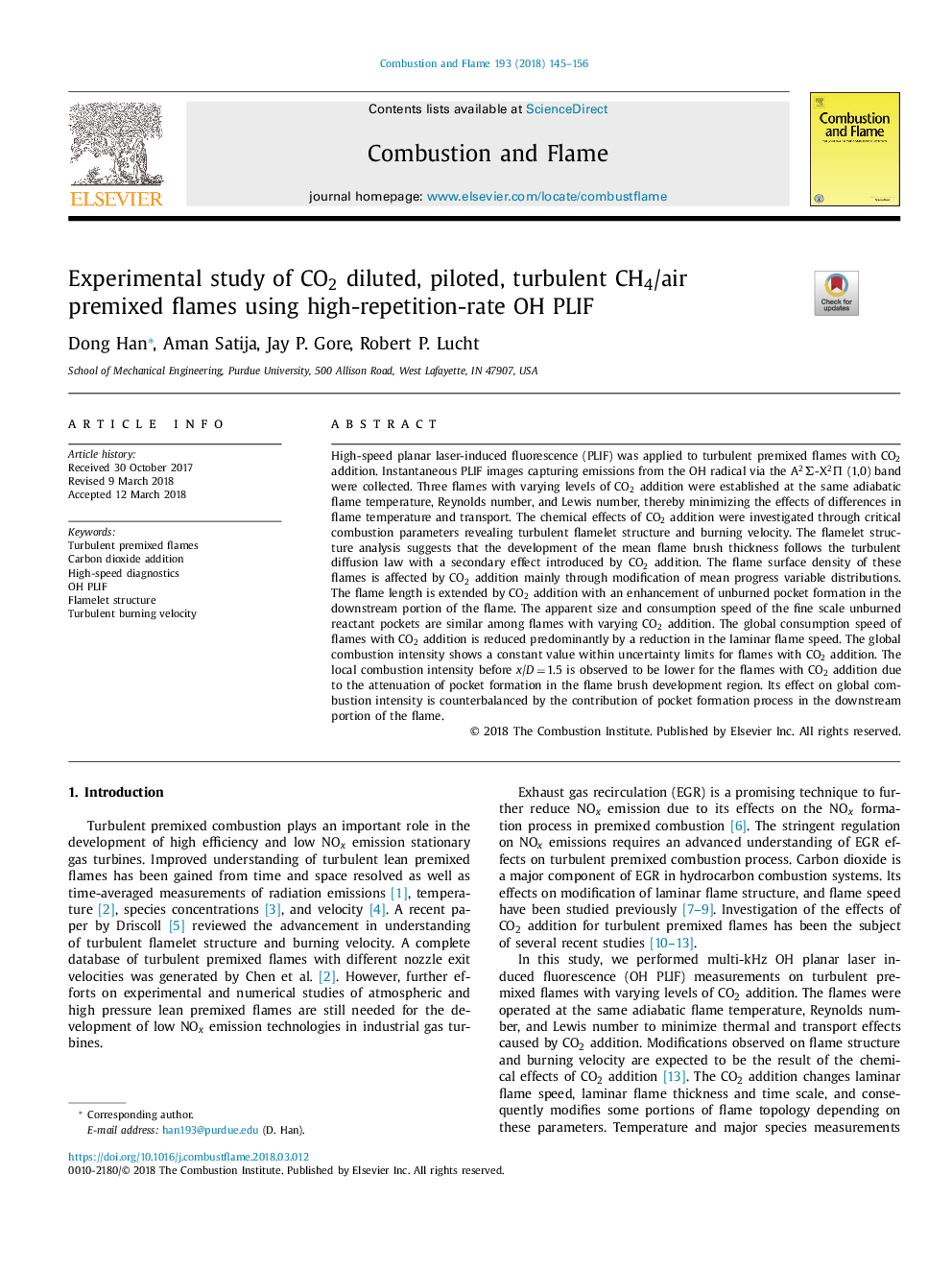| Article ID | Journal | Published Year | Pages | File Type |
|---|---|---|---|---|
| 6593555 | Combustion and Flame | 2018 | 12 Pages |
Abstract
High-speed planar laser-induced fluorescence (PLIF) was applied to turbulent premixed flames with CO2 addition. Instantaneous PLIF images capturing emissions from the OH radical via the A2Σ-X2Î (1,0) band were collected. Three flames with varying levels of CO2 addition were established at the same adiabatic flame temperature, Reynolds number, and Lewis number, thereby minimizing the effects of differences in flame temperature and transport. The chemical effects of CO2 addition were investigated through critical combustion parameters revealing turbulent flamelet structure and burning velocity. The flamelet structure analysis suggests that the development of the mean flame brush thickness follows the turbulent diffusion law with a secondary effect introduced by CO2 addition. The flame surface density of these flames is affected by CO2 addition mainly through modification of mean progress variable distributions. The flame length is extended by CO2 addition with an enhancement of unburned pocket formation in the downstream portion of the flame. The apparent size and consumption speed of the fine scale unburned reactant pockets are similar among flames with varying CO2 addition. The global consumption speed of flames with CO2 addition is reduced predominantly by a reduction in the laminar flame speed. The global combustion intensity shows a constant value within uncertainty limits for flames with CO2 addition. The local combustion intensity before x/Dâ¯=â¯1.5 is observed to be lower for the flames with CO2 addition due to the attenuation of pocket formation in the flame brush development region. Its effect on global combustion intensity is counterbalanced by the contribution of pocket formation process in the downstream portion of the flame.
Keywords
Related Topics
Physical Sciences and Engineering
Chemical Engineering
Chemical Engineering (General)
Authors
Dong Han, Aman Satija, Jay P. Gore, Robert P. Lucht,
